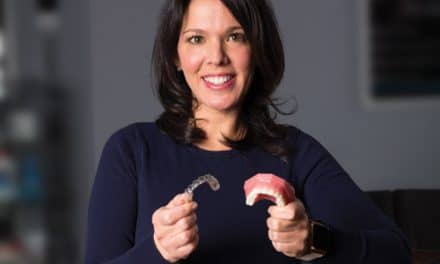
Orthodontic Products: What type of products does Imaging Sciences International offer orthodontic practices?
Mark Hillebrandt: For the orthodontic practitioner, we offer the i-CAT® Next Generation™ system with Tx STUDIO® software. The i-CAT system captures the full anatomical area for orthodontic planning in 3D, and can also generate a 2D ceph from the scan. Plus, the company offers a traditional 2D panoramic feature for the unit.
OP: What are the unique features of the Tx STUDIO software?
MH: Tx STUDIO, available exclusively for i-CAT systems, includes a powerful suite of treatment tools designed for simple and fast 3D planning and case presentations. After capturing all initial records in a single 5-second 3D scan, orthodontists can create treatment plans with such tools as airway-volume analysis, the TAD placement tool, TMJ region analysis, and the superimposition tool. Optional tools include 3D cephalometric tracing, patient soft-tissue photo wrapping, a reports creator, and full digital model creation.
OP: What is Quick Scan?
MH: Since, of course, limiting radiation exposure to the patient is of utmost importance to the orthodontist, the patient, and to us at Imaging Sciences, we have developed i-CAT technology to give the clinician control over dose. With Quick Scan, orthodontists can capture initial workups and progress scans with our lowered-dose setting in just 5 seconds. This type of scan captures a wealth of information in detailed 3D images. In addition, using our collimation feature, the size of the scan can be determined based on patients’ unique case needs by targeting specific areas. By controlling exposure time and scan sizes, and using our 2D pan feature, doctors control the radiation exposure.
OP: What kind of customer support does Imaging Sciences provide users?
MH: As the innovators of cone-beam technology, we provide strong, highly specialized service and support with a dedicated focus on 3D. As members of the i-CAT Network, orthodontists have exclusive access to continuing education programs, opportunities to network with other 3D users, access to the vast knowledge of the i-CAT global community of clinicians, and the support of extremely skilled training and technical response teams.
OP: Considering the economy, is Imaging Sciences offering any discount or incentive plans to customers?
MH: We know that making our technology affordable is key to its adoption within orthodontics, which is why I’m happy to report that we have recently lowered our price by $20,000 on our i-CAT Next Generation with Extended Field of View.
OP: What do you see as the "next big thing" in orthodontic technology?
MH: The next best thing is already here, and that is 3D treatment-planning and treatment execution. i-CAT is more than just a scanner; it is a system that can be used to track the detailed progress of patients as they move through treatment, to create more accurate ceph tracings in a fraction of the time, to measure the opening of an airway, to predict soft-tissue changes from orthodontic treatment, to plan the placement of TADs, and much more. i-CAT can also be used in conjunction with other technologies, such as SureSmile®, which takes the cone beam scan from 3D diagnostics into actual 3D treatments of the mouth.
OP: What’s next for Imaging Sciences International?
MH: With the largest installed base of orthodontists using 3D technology, ISI will continue to invest in new orthodontic treatment solutions and software that improve office efficiency and clinical outcomes for patients.










